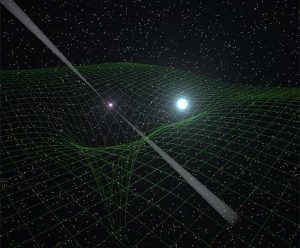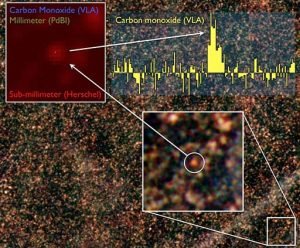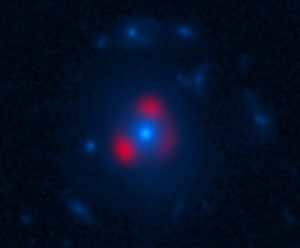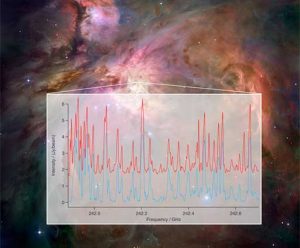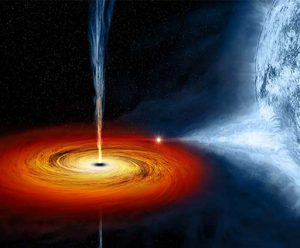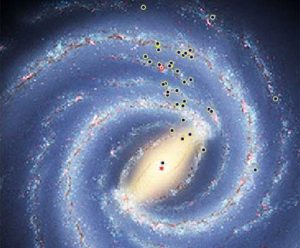A strange stellar pair nearly 7,000 light-years from Earth has provided physicists with a unique cosmic laboratory for studying the nature of gravity.
Massive Star Factory Churned in Universe’s Youth
Astronomers using a world-wide collection of telescopes have discovered the most prolific star factory in the Universe, surprisingly in a galaxy so distant that they see as it was when the Universe was only six percent of its current age.
ALMA Finds ‘Monster’ Starburst Galaxies
Astronomers using the Atacama Large Millimeter/submillimeter Array telescope have discovered starburst galaxies earlier in the Universe’s history than they were previously thought to have existed.
Astrochemistry Enters a Bold New Era with ALMA
Combining the cutting-edge capabilities of the ALMA telescope with newly-developed laboratory techniques, scientists are opening a completely new era for deciphering the chemistry of the Universe.
First Complete Description of a Black Hole
For the first time, astronomers have produced a complete description of a black hole, a concentration of mass so dense that not even light can escape its powerful gravitational pull. Their precise measurements have allowed them to reconstruct the history of the object from its birth some six million years ago.
Super-Sharp Radio ‘Eye’ Remeasuring the Universe
Using the super-sharp radio vision of astronomy’s most precise telescope, scientists have extended a directly-measured yardstick three times farther into the cosmos than ever before, an achievement with important implications for numerous areas of astrophysics, including determining the nature of Dark Energy, which constitutes 70 percent of the Universe.






